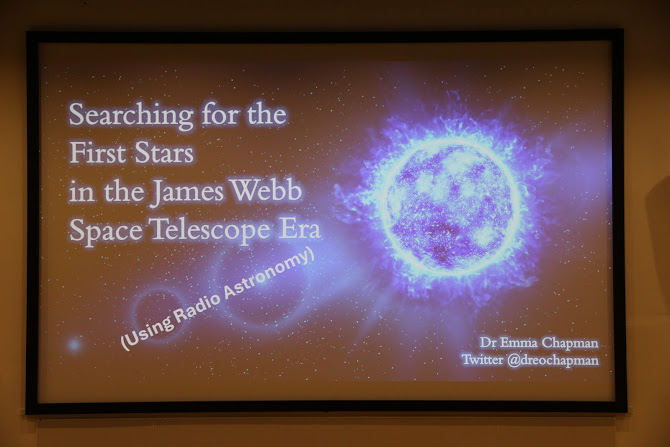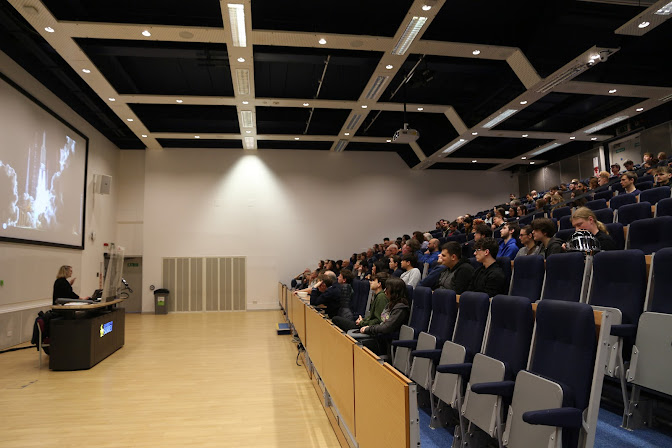Eclipses have always fascinated humanity. The mystical shadows crossing the Sun or Moon, ancient legends of cosmic battles, and deep-rooted superstitions passed down through generations. Even today, myths about solar and lunar eclipses persist. But astronomy, physics, and biology give us a very different picture: eclipses are safe, predictable, and profoundly inspiring.
And what better time to explore these truths than today’s lunar eclipse (7 September 2025), a reminder of how the Earth’s shadow gently sweeps across the Moon in a display of celestial geometry.
If you are searching for:
* Eclipse myths and facts
* Can you eat during an eclipse?
* Is today’s lunar eclipse harmful?
* Scientific explanation of solar and lunar eclipses
- you’re in the right place. Let’s bust some myths.
Myth 1: Eclipses Are a Bad Omen
 |
| Source: Wikimedia Commons |
Throughout history, eclipses were feared as signs of disaster - wars, death of rulers, or famine.
🔭 Scientific Reality:
A solar eclipse occurs when the Moon passes between Earth and the Sun. A lunar eclipse happens when Earth’s shadow falls on the Moon. ( I usually remember as Solar - SME, Lunar SEM, where S is Sun, E is Earth and M is Moon). Both are governed by orbital mechanics and are entirely predictable thousands of years in advance. Eclipses are celestial alignments, not omens.
Myth 2: You Should Not Eat or Drink During an Eclipse
This is one of the most common superstitions across Asia and India that fasting during eclipses out of fear that food becomes impure.
🔭 Scientific Reality:
Physics: An eclipse does not emit any new radiation. The Sun’s rays are only partially blocked, not altered.
Biology: Spoilage of food depends on temperature, microbes, and storage and not on whether an eclipse is happening.
Astronomical Evidence: During major eclipse expeditions (such as the 1919 solar eclipse that confirmed Einstein’s theory of relativity), scientists ate, drank, and worked normally. Millions of eclipse-chasers worldwide do the same today.
In fact, if anything, food under eclipse conditions might spoil slower due to a slight cooling of the environment. There is zero scientific evidence of contamination or toxicity.
Therefore, Eating or drinking during an eclipse is 100% safe.
Myth 3: Pregnant Women Should Stay Indoors During an Eclipse
 |
| Source: Wikimedia Commons |
A widespread cultural warning suggests eclipses can harm unborn children.
🔭 Scientific Reality:
There is no mechanism by which an eclipse could affect pregnancy. The only actual risk is eye damage from looking directly at the Sun during a solar eclipse without protective glasses. Pregnant or not, safe viewing methods make eclipses harmless.
Myth 4: Eclipses Are Rare and Unpredictable
🔭 Scientific Reality:
Globally, 2–5 solar eclipses and 2-3 lunar eclipses occur each year. While total solar eclipses at a single location are rare (once in 300–400 years), eclipses themselves are frequent and precisely predictable. NASA and observatories publish eclipse calendars decades in advance.
Myth 5: The Sun or Moon Is Being “Eaten”
Many cultures once believed demons, dragons, or deities swallowed the Sun or Moon during an eclipse.
🔭 Scientific Reality:
Nothing is eaten. The Sun continues to shine, the Moon continues to orbit, and only shadows are at play. The myth is beautiful as poetry but not as physics.
The Real Wonder of Eclipses: advancing the science
Far from being dangerous, eclipses have advanced science:
* In 1868, helium was discovered during a solar eclipse (Yes, the statement is true; helium was first detected as an unknown yellow spectral line in sunlight during a total solar eclipse on August 18, 1868, by astronomers Pierre Jules César Janssen and Norman Lockyer, making it the first element discovered in space before being found on Earth. )
* In 1919, Sir Arthur Eddington used a solar eclipse to confirm Einstein’s General Relativity.
* Today, solar eclipses allow astronomers to study the Sun’s corona and magnetic fields.
And tonight’s lunar eclipse (September 7, 2025) offers another chance to watch our planet’s shadow slowly cover the Moon, a safe, breathtaking, and humbling sight.
Eclipses are not omens. They are natural cosmic events, safe for everyone, and among the most spectacular sights in the sky. They remind us of the delicate balance of celestial motions: the Sun is 400 times larger than the Moon, but also 400 times farther away, thus allowing for perfect alignments that inspire awe.
✨ So the next time someone warns you not to eat, drink, or step outside during an eclipse, remember: science tells us the truth. An eclipse is not a moment for fear, it is a moment for wonder and science!
Put on your eclipse glasses for a solar eclipse, or simply look up at tonight’s lunar eclipse with your own eyes, and celebrate your place in the cosmic dance.



















































